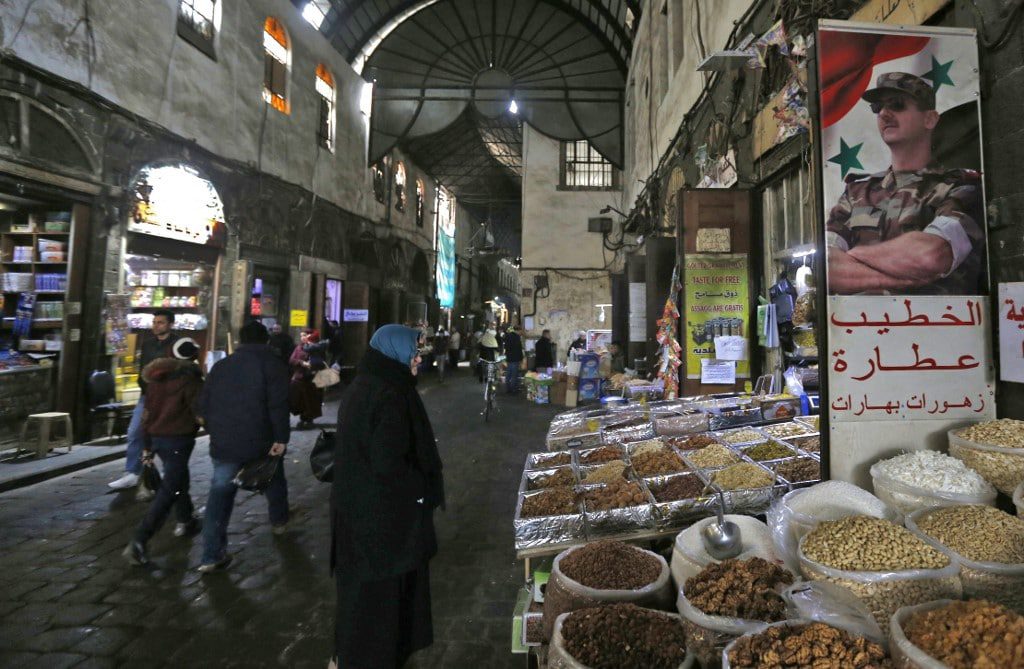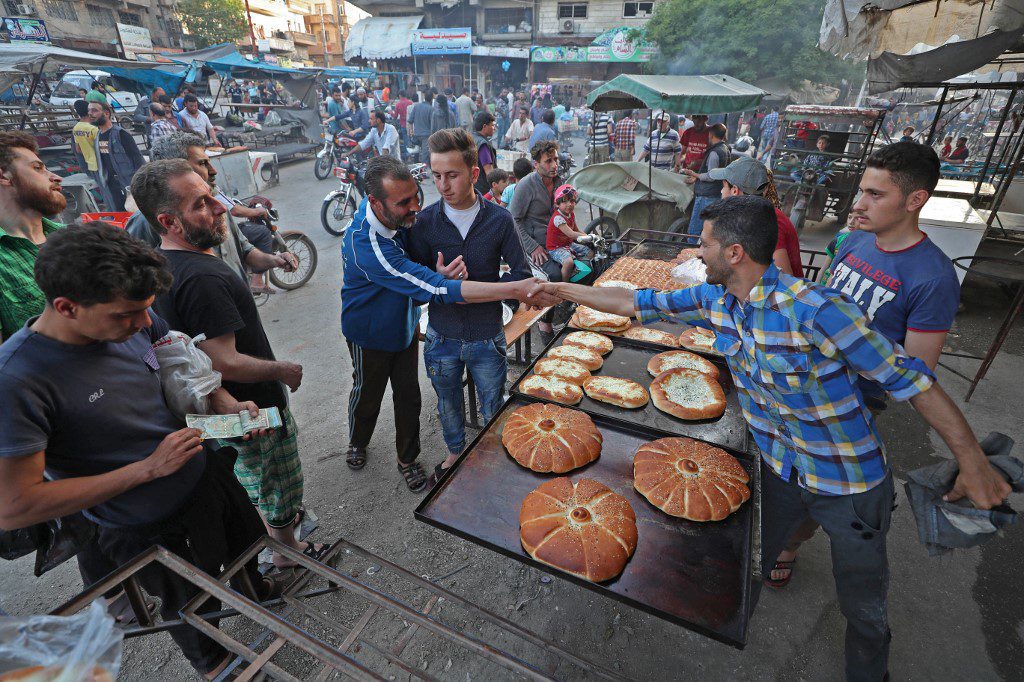
By: Sophia Akram
After almost a decade of war in Syria, 9.3 million people in the country are food insecure. New waves of displacement in the early part of last year curtailed agricultural production adding to existing precarious economic conditions. COVID restrictions and a harsh winter have further compounded livelihoods and the cost and quality of living. Furthermore, the scorched earth tactics of the regime and fiscal decision-making have contributed to the economic and social despair facing Syrians and have reportedly led to tensions that could only strain possibilities for some stability in Syria.
Food shortages have been the norm in many areas of Syria for some time. With long queues outside bakeries and fuel stations, reports say some people have waited six hours at a time to get hold of essential goods.
The cost of living likely varies by area but month-on-month increases have been reported in Damascus, the Assad regime announcing a 100 percent increase in the price of bread in its area of control last October 2020. The Kassioun index, meanwhile, placed the national increment as 192 percent over the course of last year, up from 380,000 to 732,000 Syrian pounds. The average Syrian income, however, hovers at around 33,000 Syrian pounds according to 2020 reports, three times less than the average cost of basic food needs for a family of five people in Damascus.
Various factors have contributed to the flailing economy, including an inflationary budget, the prioritisation of military defence over economic and social considerations, unemployment and a bleak trajectory for the war. The economic situation in Lebanon has also rebounded onto Syrians as any savings they had placed in Lebanese banks is now lost.
Food insecurity has suffered directly as well from warfare tactics such as the targeting of crops in Idlib and Aleppo — according to Turkish media — by mortar attacks in an attempt to starve the population.
Before the drought in 2008, wheat was abundant but Syria became an importer as the war kicked in, turning it toward Russia, which offered the grain through a credit line in return for oil and phosphate mine access.
Imports are still needed but Russian wheat exports have now declined. What’s more US sanctions have hindered trade affecting domestic supplies during COVID.
Restrictions from the virus have also hindered aid deployment while leading civilians to desperate measures.
By 31 December 2020, there were 20,300 confirmed COVID cases, a 50 percent increase from 18 November to 21 December 2020 partly due to higher testing and higher infection rates. Although Worldometer figures put confirmed cases lower on 7 February 2021 at 14,408 cases, the large volume of cases for a depleted healthcare system has left facilities overwhelmed, particularly in northwest Syria.
Humanitarian access in an already challenging conflict setting has been further hampered by the closing of crucial border crossings, denying people from essential provisions, including, food and medical supplies.

“It’s incredibly difficult to respond in any conflict setting”, says Charles Lawley, head of communications and advocacy at Syria Relief, “In the history of humanitarian aid, the Syrian crisis is the most difficult to respond to”, he says, with aid workers in the past being treated as legitimate military targets. The only way to respond has been through local humanitarian partners. Still, Lawley says the organisation has lost many in the conflict.
In addition to the immediate effect of people going hungry, Lawley says the food crisis has triggered negative coping mechanisms, such as children dropping out of school, which could mean child labour or early marriage. Families also resort to selling their assets like fridges or cars to afford food and some go out to beg.
Mothers with newborn babies routinely missing meals also mean children have missed out on early essential nutrients that could affect them later down the line, particularly true for children who have spent large portions of their life under siege, says Lawley.
In all, increased black-market activity, widespread kidnapping and looting, as well as war profiteering, is permeating Syria.
The rising cost of living has also led to frustrations in the form of social media posts and some demonstrations. Protests erupt for various reasons in Syria, but the Syria Report suggests that there have been limited displays of discontent for the deteriorating living conditions and the issues that triggered the civil conflict have gone unaddressed.
Caroline Brooks, Syria Programmes Manager at peacebuilding NGO International Alert, says the country’s scarcity of resources, rising cost of living and overall conditions of hardship does place increased pressure on already difficult circumstances and could contribute to rising tensions.
“Addressing economic concerns and dynamics are critical to peacebuilding in Syria over the longer term”, she tells Fanack.
“Currently, the conditions for effective and inclusive economic development and recovery are lacking at the macro level and the ability to act according to best practices and norms is severely constrained by the political and security environment”.
Food insecurity is also above all a danger to national security. The UN Security Council in 2018 adopted Resolution 2417 condemning starvation as a tool of war and reiterating the need to ensure civilians have access to food during conflict.
To get Syria out of the current crisis, organisations tout incremental solutions but overall current wages need to increase 420 percent to meet current prices, says the London School of Economics (LSE).
This could mean an extra 500 billion SYP each month for public sector workers, the 6 trillion SYP payout not currently within the 4,000 billion SYP public budget.
The International Crisis Group has in the past suggested swapping sanctions that aim to gain leverage over the regime or an “incremental incentives-based approach”, involving slow sanctions relief in exchange for staged reconstruction as a carrot for political reforms.
There also needs to be a rethink on the humanitarian response to cover basic needs that could be the groundwork for an inclusive and productive economy governed by fair institutions to ensure sustainable humanitarian impact. The design of such a solution “should be implemented incrementally and include Syrians from all backgrounds”, says LSE, “to make it part of viable peace”.
Brooks also says there have been efforts at the local level of livelihood programmes and activities for small scale economic recovery with social cohesion and peacebuilding sometimes integrated into programming. The impact of these efforts are difficult to measure, however, and expanding the programming beyond the immediate community is also challenging.
Ramifications for particularly hard-hit areas in the northwest or northeast, like rebel-held Idlib, are stark, potentially leading to its Gazafication and not being recognised by any government. Poverty will run rife, says Lawley. In the worst-case scenario, the regime could take Idlib, leading to greater humanitarian fallout.
The best scenario, says Lawley, would be if the UN-mandated Syrian Constitutional Committee is taken seriously by all parties for reconciliation of the conflict, which at this stage seems like a distant possibility.


